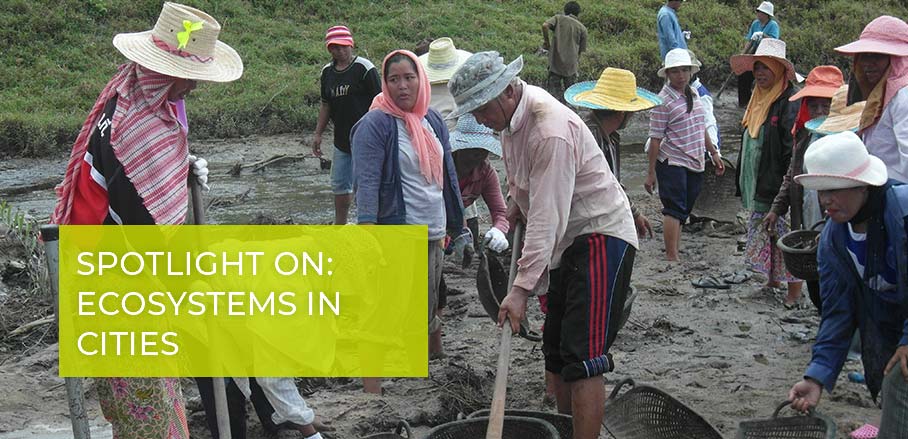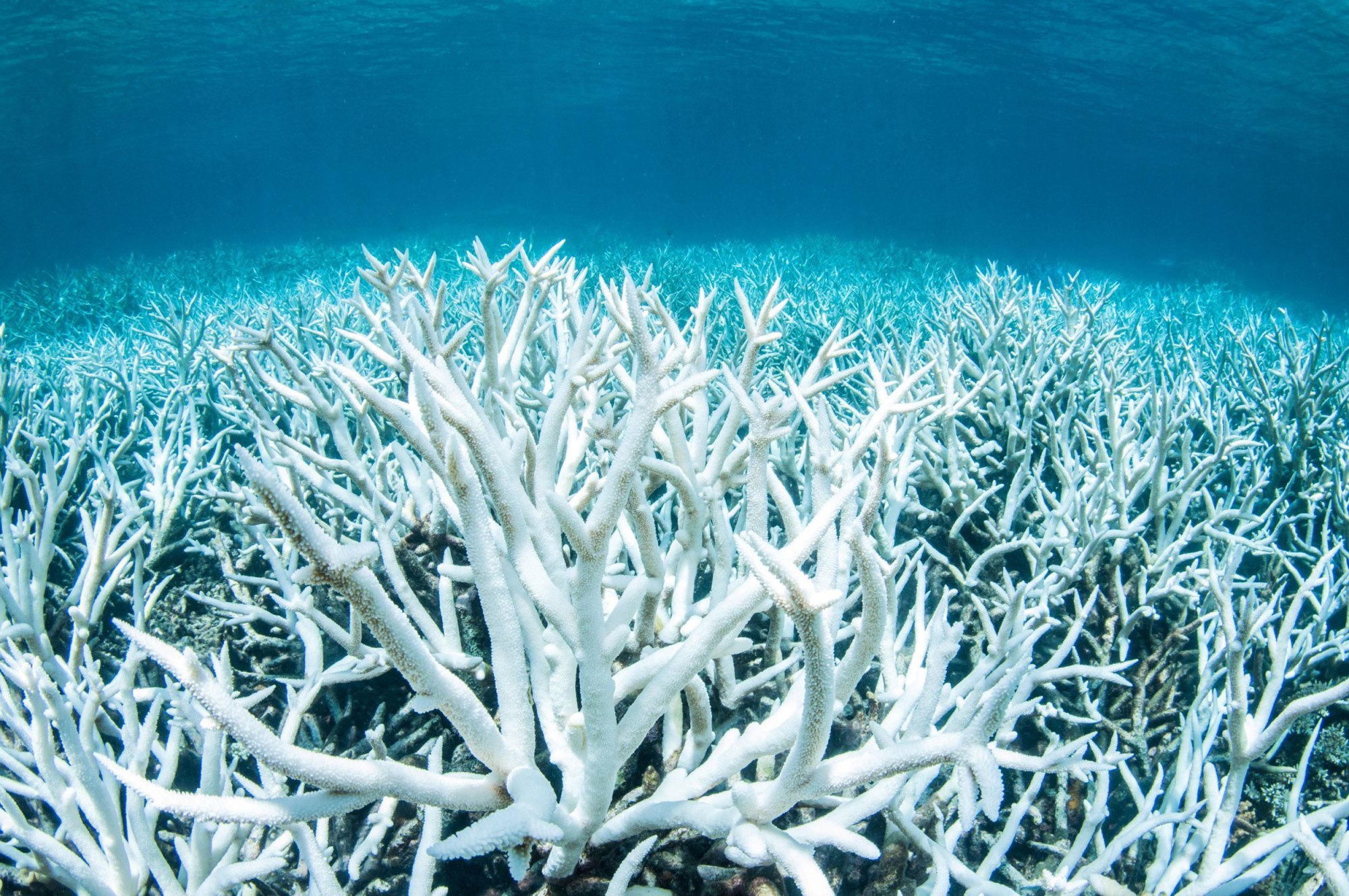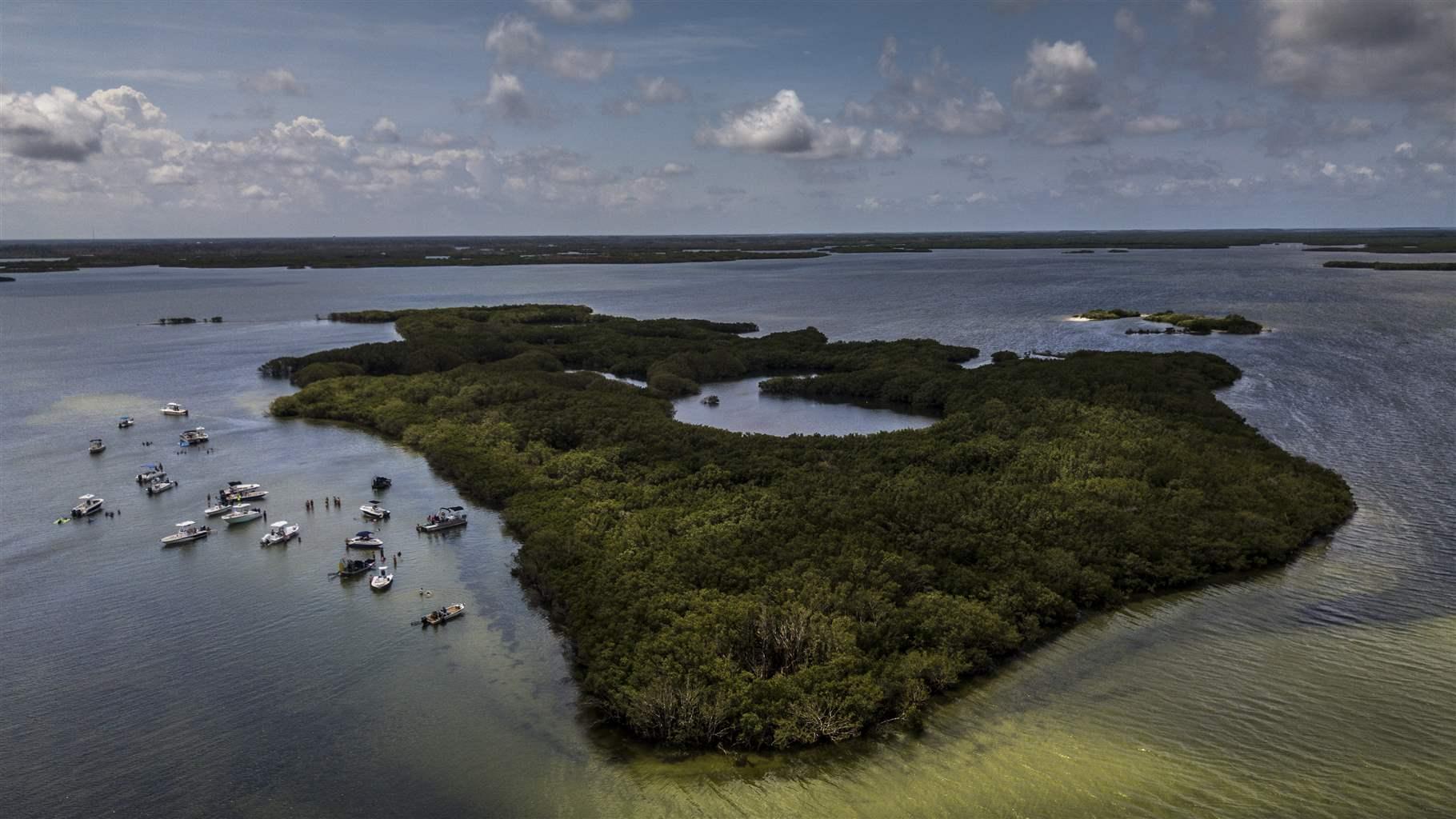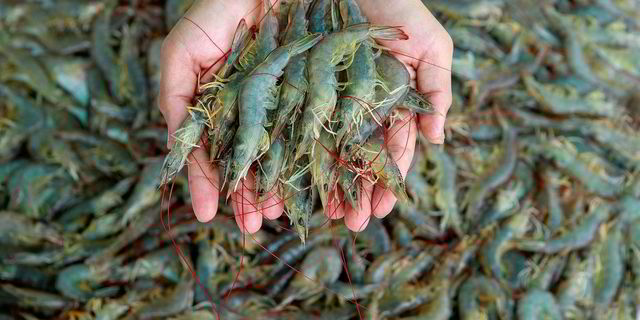FEATURE
Addressing Climate Change Vulnerability of Coastal Cities Through Mangrove Forests
By Alfredo Quarto – MAP

USA – Around the world, coastal cities are threatened by storms, rising sea levels, and other climate change related hazards. With conventional approaches often both costly and ineffective, nature-based solutions are offering valuable alternatives. One example are the community-based methods developed by the NGO Mangrove Action Project. The climate crisis is real and measurable. Sea levels are rising, storms and droughts are intensifying at an alarming rate. A recent study warns that major coastal cities such as Mumbai, Shanghai, Jakarta, and Bangkok could be lost to rising sea levels over the next 30 years, affecting an estimated 300 million people living along the world’s coasts. This is about three times the number of people affected than previously estimated. “The figure could double to 630 million people affected by 2100 if little is done to rein in greenhouse gas emissions. These assessments show the potential of climate change to reshape cities, economies, coastlines and entire global regions within our lifetimes,” says Scott Kulp, lead author of the study. Earlier projections seem to have been far too conservative, while newer ones claim that major coastal population centres run risks of becoming completely inundated, displacing hundreds of millions of people, resulting in tragic environmental, social and economic disruption. For instance, much of Southern Vietnam will be inundated, where rising seas would potentially displace a quarter of the country’s population. The cities of Mumbai and Bangkok could be completely submerged. READ MORE GLOBAL Mangrove conservation can pay for itself in flood protection

USA – The natural coastal defenses provided by mangrove forests reduce annual flooding significantly in critical hotspots around the world. Without mangroves, flood damages would increase by more than $65 billion annually, and 15 million more people would be flooded, according to a new study published March 10 in Scientific Reports. Climate change is increasing the risk of coastal flooding through its effects on sea level rise and the intensity of hurricanes. According to the study's authors, conservation and restoration of natural defenses such as mangroves offers cost-effective ways to mitigate and adapt to these changes. The researchers provided high-resolution estimates of the economic value of mangrove forests for flood risk reduction across more than 700,000 kilometers of coastlines worldwide. They combined engineering and economic models to provide the best analyses of coastal flood risk and mangrove benefits. Their results show when, where, and how mangroves reduce flooding, and they identified innovative ways to fund mangrove protection using economic incentives, insurance, and climate risk financing. READ MORE Earth's coral reefs could be gone by 2100, research finds

GLOBAL – Climate change could wipe out almost all coral reef habitats around the world by 2100, according to research released Monday. The bleak outlook forecasts that warming oceans and rising seas could have a devastating impact on ocean ecosystems, suggesting that efforts to restore dying corals will likely encounter difficulties as global warming continues to wipe out habitats that could once support healthy reef systems. "By 2100, it's looking quite grim," Renee Setter, a biogeographer at the University of Hawaii at Mānoa, said in a statement. She presented her findings at the annual Ocean Sciences Meeting, which is being held through Friday in San Diego. Setter and her colleagues simulated ocean environments in which coral reefs currently exist based on projections of sea surface temperature, ocean acidification, wave energy, pollution and fishing practices. They found that by 2100, few to zero suitable habitats for corals are likely to remain. READ MORE AFRICA Africa must not be shortchanged on climate finance

KENYA – Fifty-five kilometres south of Kenya’s coastal capital of Mombasa is Gazi village, a small rural community snoozing in the Chale Peninsula, deriving its name from Gazi Bay. Gazi Bay is a major fish-landing site in the eastern seaboard of Africa, where the ecosystem and monsoon tides favour a rich marine life. However, Gazi is better known globally for its mangrove biodiversity more than for its fish or tourist appeal. Conserving biodiversity, improving community livelihoods and combating climate change are the hallmarks of this rural parish, a world leader with its pioneering, community-led approach to mangrove conservation. “When you talk about mangrove conservation in Africa, Gazi Bay stands out,” says Josphat Mwamba, the programme manager. “The Mikoko Pamoja [Swahili for ‘mangroves together’] initiative is the world’s first project to fund mangrove conservation through the sale of carbon credits.” The proceeds from Mikoko Pamoja’s conservation work are ploughed back to benefit the entire Gazi community of about 10,000 residents. Clean piped water, electricity, refurbishment of schools, provision of books and materials and support for youth and women groups, all benefit directly from the income generated from the carbon funds that the community receives courtesy of protecting mangrove forests. READ MORE Saving Mozambique’s seagrass

MOZAMBIQUE – People can’t think of Inhaca without thinking about seagrass,” says Salamao Bandeira of Maputo’s Eduardo Mondlane University, knee-deep in the shallow waters on the seaward side of Maputo Bay, as he points at the shores of Inhaca Island.Nearby, residents are submerged waist-deep in the sea, taking advantage of the low-tide to fish in the current or hunt for clams and crabs in the seagrass. “It means a lot to the people here—it’s not just a resource, it’s part of the way of life,” he adds. Indeed, seagrass helps sustain life here in the Maputo and Inhambane bays of Mozambique. The shrimps, sea cucumbers, clams and crabs found among these underwater meadows are a source of food and employment for local communities, says Bandeira. But experts warn that destructive shellfish harvesting—along with the flooding and sedimentation from rivers emptying into the bay—are destroying seagrass beds at a rapid rate. Research indicates that 86 per cent of seagrass meadows have been lost in the northwest of Maputo Bay alone—putting local culture, jobs and food security at risk. READ MORE AMERICA Mexico is illegally destroying protected mangrove trees to build an $8 billion oil refinery

MEXICO – Mexico’s state-owned oil company Pemex has defied a government order by cutting down protected mangrove trees on the site where president Andres Manuel Lopez Obrador has ordered the construction of an oil refinery, according to sources familiar with the project. Satellite images show a landscape razed presumably to accommodate the controversial $8 billion project. The populist president has made the Dos Bocas refinery project, located in his home state of Tabasco, central to his bid (paywall) to revive Pemex from its current dysfunction. Now Latin America’s second-biggest company by revenue, Pemex drove the Mexican economy in the 1960s and 1970s but lost $35 billion last year. Critics say the refinery isn’t economically viable. So far, the project has come at the cost of a forest of mangroves, a tree treasured by conservationists and important in combating climate change. The trees create complex ecosystems that provide almost 6% of Mexico’s GDP, according to the University of California, San Diego. Swaths of jungle, including a few dozen hectares of mangrove, were cut down by a third-party company shortly after then-president-elect Lopez Obrador announced the project in July 2018. The permit to begin work wasn’t issued until the next year. READ MORE Tropical Forests Are Losing Their Ability to Absorb Carbon, Study Finds

BRAZIL – The world's tropical forests are rapidly losing their ability to absorb carbon from the atmosphere, worrying scientists that a major carbon dump will transform them into a carbon source, according to research published recently. The study, which was published in the journal Nature, found that in 15 years the Amazon could turn into a carbon source, due to wildfires, deforestation, and the excess greenhouse gasses pumped into the atmosphere, as The Guardian reported. An international consortium of European and African scientists led by researchers from the University of Leeds studied more than 300,000 trees over the course of 30 years in the Amazon and the African tropics. The researchers found that climate models that typically predict that tropical forests will serve as carbon sinks for decades are inaccurate. Instead, the decades of analysis found that the uptake of carbon into the world's tropical forests actually peaked in the 1990s, according to a press release from the University of Leeds. "Our findings show that back in the 1990s intact tropical forests were absorbing 4.6 billion tons of carbon dioxide every year," Simon Lewis, professor of Global Change Science at University College London, and Lee White, the government of Gabon's Minister for Water, Forests, the Sea and Environment, wrote in The Independent. READ MORE Florida Poised to Protect Gulf of Mexico’s Largest Seagrass Bed

USA – Boaters stop to swim and fish in the clear waters of the St. Martins Marsh Aquatic Preserve in Crystal River, Florida, along the state’s Nature Coast. Bills passed by the Florida Legislature would expand protections to coastal waters off Citrus, Hernando, and Pasco counties. Florida’s west coast is home to vast seagrass beds where fishing, scalloping, and ecotourism form the backbone of coastal economies. Some 400,000 acres of those beds moved a critical step closer to protection during the Florida legislative session when lawmakers approved bills to create the Nature Coast Aquatic Preserve off the coasts of Citrus, Hernando, and Pasco counties. The legislation now awaits signature by Governor Ron DeSantis (R). With his approval, the area would become the first new preserve designated in more than 30 years and the 42nd in a state system designed to maintain water quality and biological value to ensure healthy ecosystems. The preserve, which covers part of the Gulf of Mexico’s largest seagrass bed, would still allow traditional activities such as boating, fishing, and scalloping. READ MORE Company touting cure to farmed shrimp disease signs deal with global pharmaceutical giant

USA – Pebble Labs, the US-based biotech company that claims to have found a potential solution to two of the shrimp farming industry's biggest problems, has signed a deal with one of the world's largest veterinarian phramaceutial groups to co-develop and commercialize its technology. French group Virbac is already a leading animal health player in aquaculture, will work with Pebble Labs to bring RNA-based technologies to global large-scale aquaculture and focus on a solution for white spot syndrome virus (WSSV), a disease that can cause mortalities in a shrimp crop of up to 50 percent and incur costs of around $3.5 billion worldwide each year. Currently the aquaculture industry relies heavily on probiotics, synthetic chemicals and antibiotics to fight the diseases which can be devastating to shrimp farms worldwide. READ MORE ASIA More than 60% of Myanmar's mangroves has been deforested in the last 20 years

MYANMAR – Mangroves account for only 0.7 per cent of the Earth's tropical forest area, but they are among the world's most productive and important ecosystems. They provide a wealth of ecological and socio-economic benefits, such as serving as nursery habitat for fish species, offering protection against coastal surges associated with storms and tsunamis, and storing carbon. While many countries have established legal protection for mangroves, their value for sustainable ecosystem services face strong competition from converting the land to other more lucrative uses, particularly for agriculture. In the past decade, studies have shown that mangrove deforestation rates are higher than the deforestation of inland terrestrial forests. New research from the National University of Singapore (NUS) provided additional support for this, with results showing that mangroves deforestation rates in Myanmar, an important country for mangrove extent and biodiversity, greatly exceed previous estimates. READ MORE
Like this newsletter?
Pease consider donating to MAP to keep it going.
Giving could never be easier | ACTION ALERTS Enough! Pledging zero tolerance to attacks against environmental and human rights defenders. SIGN THE PETITION PETITION – Sea turtles or condominiums?
Sand mining and construction work would wipe out a marine biodiversity hotspot and destroy the livelihoods of local people, who have not been consulted. Please SIGN! PETITION – Save Penang! Reject the 3-Islands Reclamation!
The lack of public consultation and detailed information about the project is shocking in view of the size of proposed reclamation which is 4,500 acres or 7 square miles
PLEASE SIGN
PETITION – Save Pulau Kukup National Park – second largest mangrove island in the world. Sign The Petition Like this newsletter? Pease consider donating to MAP to keep it going. Giving could never be easier 
Mangrove Restoration Map VIEW MAP HERE 
Restoring The Natural Mangrove Forest
Watch movie 
Community Based Ecological Mangrove Restoration in Rufiji Delta VIEW VIDEO Video: Mangroves for the Future – A look bacK. As the latest phase of Mangroves for the Future (MFF) draws to a close, this video highlights some of the project’s most successful initiatives – from local women supporting national park management in Viet Nam to an island in the Maldives that has become a model for waste management, and everything in between. View Here WANT TO GET INVOLVED?
Follow and Join MAP!
   
Like this newsletter? Pease consider donating to MAP to keep it going. Giving could never be easier 

VOLUNTEER OPPORTUNITY 
MANGROVE ISSUES Want to learn more about mangroves?
Our short presentation will give you a better understanding of the issues we are working to solve. WATCH PRESENTATION What is CBEMR? Easy to follow fact sheet – CLICK HERE What is EPIC? – The Ecosystems Protecting Infrastructure and Communities (EPIC) project: the role of ecosystems as protective barriers against climate induced hazards MANGROVES APP AVAILABLE
A pictorial field guide for easy identification of various mangrove species and learning about the mangroves ecosystem. CLICK HERE View MAP’s uploaded Videos at MAPmangrover’sChannel
Question Your Shrimp Consumer/Markets Campaign!
WATCH VIDEO Mangrove Restoration in Asia – Watch Short Video The Value of Mangrove Forests View Video CBEMR Experience Exchange MAP 2017 English Subtitles
VIEW THE VIDEO Mangroves: Guidebook to Malaysia – Click Here
Mangrove rehabilitation in Asia – Local Action and cross-border Transfer of Knowledge for the Conservation of Climate, Forests and Biodiversity VIEW VIDEOS HERE SHARE MAP'S VISION
CLICK HERE to watch short introductory video. Together we can work "at the roots of the sea". Our short documentary, Reducing the Risk of Disaster through Nature-Based Solutions : Mangroves

Exclusive Interview with Alfredo Quarto, Co-Founder and Executive Director of Mangrove Action Project – See more
Marvellous Mangroves Curriculum The Marvellous Mangroves Education Forum is an online hub for those utilizing the Marvellous Mangroves (MM) Curriculum. It gives students, teachers and anyone interested in mangroves, the opportunity to learn and share ideas themed around the curriculum, to connect and communicate with others around the globe whilst exploring mangroves from your computer or on the go. VISIT 
The award-winning Marvellous Mangroves (MM) curriculum educates children on the importance of mangroves and their ecological functions, teaching them about modern challenges and mechanisms for sustainability. VIEW VIDEO Marvellous Mangroves Curriculum in Bangladesh – WATCH VIDEO
MARVELLOUS MANGROVES IN BRAZIL
En Portuges 
Marvellous Mangroves – A Curriculum-Based Teachers Guide. FOR MORE ON MAPs AWARD WINNING CHINA MANGROVE CURRICULUM VISIT

VIMEO SHOW
VISIT OUR "MM" WEBPAGE Check out our presentation for more details on Marvellous Mangroves Read this 10 page history of the development of MAP’s educational curriculum VIEW DOCUMENT
Article in Canada's Green Teacher Magazine – Read More
Like this newsletter? Pease consider donating to MAP to keep it going. Giving could never be easier 
Green Planet Fundraising Assists MAP – LEARN MORE
Volunteer Opportunities with Mangrove Action Project CLICK HERE
"Question Your Shrimp" Campaign Question Your Shrimp- Don't Buy or Sell Imported Tropical Shrimp! Sign the Petition Learn more about the affects of the shrimp industry on mangroves by visiting our blog
Editor’s Note: Mangrove Action Project’s Executive Director, Alfredo Quarto was interviewed about shrimp by Green Acre Radio’s Martha Baskin
LISTEN TO INTERVIEW Sign the Consumer's Pledge to avoid imported shrimp
Not yet a MAP News subscriber?
Click here to subscribe. Note to Our Readers: We strive to keep active links in our newsletter. However, due to circumstances beyond our control, occasionally links to stories may become broken. If you find a link to a story is not functioning, please cut and paste the headline into your browser search bar. In most cases you should be able to locate the original story.
|

























